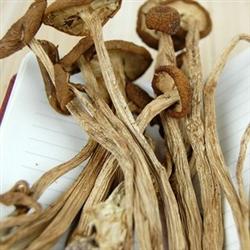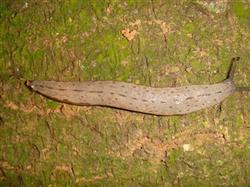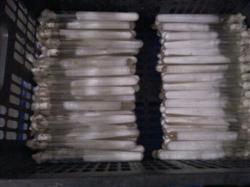How to plant Pleurotus ostreatus in corn?

How to interplant corn with mushroom? Please introduce the following methods for interplanting corn and mushroom: 1. Choose a flat land, leeward and sunny, convenient plot of water source, and a corn field suitable for interplanting. 2. Cultivation season. It meets the requirements of mycelium growth temperature 10℃~35℃, optimum temperature 22℃~27℃, fruiting body formation and growth temperature 16℃~32℃, optimum temperature 20℃~28℃. The raw material formula 1 comprises the following components in percentage by weight: 72 percent of sawdust, 25 percent of wheat bran, 1 percent of gypsum, 1 percent of sugar, 0.5 percent of calcium superphosphate and 0.5 percent of lime; the formula 2 comprises the following components in percentage by weight: 78 percent of cottonseed hull, 20 percent of wheat bran, 1 percent of gypsum, 0.5 percent of sugar and 0.5 percent of lime; and the formula 3 comprises the following components in percentage by weight: 38 percent of sawdust, 37 percent of straw powder (corn cob), 23 percent of wheat bran, 1 percent of gypsum, 0.5 percent of calcium superphosphate and 0.5 percent of lime. The bags were made of polypropylene bags with a size of 17 cm ×33 cm ×0.05 cm. Mix the raw materials evenly, the water content is 60%~62%, and the pH value is 6~6.5. Fill the bag with culture medium 18 cm high (each bag contains about 450 g dry material), put on collar and plug with cotton plug. After atmospheric sterilization, cool to below 30℃, inoculate in the inoculation box, expand 25~30 bags of each bottle of original seed, and then place it in a cool, dry, clean and ventilated culture room to cultivate bacteria. It usually takes 40~50 days for hyphae to grow full of bags. The first-class seeds were produced in early October, the second-class seeds were completed on November 5, and all were cultivated for 25~30 days. The third-class seeds were produced on January 5 of the following year. 3. Production of mushroom bed. The corn fields were rotary-tilled, weeded and irrigated with frozen water before winter. The mushroom beds are made from late February to early March of the second year, and mushroom houses are made in corn fields, the specifications of which are 60 cm wide and 10 - 15 cm deep, and about 100 cm walkways are reserved on both sides. The length and orientation of the mushroom bed depends on the plot. 4. Select the production seeds before sowing, eliminate the contaminated bacteria bags, cut the qualified bacteria bags with blades, remove the aging bacteria skin, and then crush them for sowing. According to a certain proportion of the culture material, after fermentation, white actinoid hyphae can be seen after fermentation. Spread the culture medium on the mushroom bed. Before spreading, disinfect the mushroom bed with lime, spray trichlorfon to prevent and control underground pests such as mole cricket, spread plastic film, spread and sow, the thickness of the fungus material is 9 - 10cm, the thickness of the fungus material reaches 7cm after being patted, the mushroom bed surface is turtle-back shape, and the middle is 1 cm higher than both sides. Mulch on the soil culture, in the mushroom bed every 10~15 cm put a sterile straw handle, and inclined straw put a vertical keel grass handle, every 50 cm put a ventilated grass handle. Finally, the two sides of the mushroom bed are covered with plastic film on the bed surface, the film is covered with soil, the thickness of the soil layer is 3 - 4 cm, and the mushroom bed is cultured for 35 days. 5, ventilation, arch cover curtain. After 35 days of cultivation, the culture medium becomes white, and ventilation is carried out on windless cloudy days or morning and evening every day. At the same time, arch covering is carried out, and 3 arch strips are inserted per rice, and the arch height is 35 cm. 6. Mushroom production management. When hyphae were full of material, they changed from vegetative growth to reproductive growth. Yellow water was secreted from the material surface, showing brown patches, and then small mushroom buds grew. After 10~15 days of management, the fruiting body can be harvested when it grows eight minutes mature. 7. Harvest. From mushroom bud to harvest, it usually takes 5 - 7 days. When the cap is hemispherical and the ring has not yet separated from the cap, it should be harvested. After harvesting, the material is dry. Generally, spray water once every 15 days. The second tide mushroom can be replenished with a large amount of water to keep the moisture content of the base material at 55%~60%. The moisture meets the requirements of dry material after fruiting. Generally, it can be harvested 3~4 times. 40~ 50g dry mushroom can be harvested every 450g. 8. Prevent mushroom bed infection. For the infected parts of the mushroom bed, it is necessary to remove them in time. The miscellaneous plaque can be picked up with a small spoon. When the miscellaneous plaque is large and deep, the bacteria material should be removed as a whole. After removal, spray and disinfect with white ash or kejunling to prevent expansion. Click for more cultivation techniques of Agrocybe sinensis Click for more cultivation techniques of edible fungi
- Prev

What harm does slug do to Lentinus edodes?
What harm does slug do to Lentinus edodes? Please introduce slugs lurking during the day, feeding in groups at night, after rain and cloudy days. Breed once a year. Eggs are laid in an inoculation hole in a bacterial bag with 10 to 20 eggs in each pile. Often live under dark, damp grass, fallen leaves or earth and stones. The suitable temperature is 15 to 25 degrees Celsius, higher than 26 degrees Celsius.
- Next

How to cultivate Pleurotus ostreatus with liquid strain?
How to cultivate Pleurotus ostreatus with liquid strain? Please introduce the liquid strain cultivation of Pleurotus ostreatus can refer to the following methods: 1. The optimum temperature for mycelial production of Pleurotus ostreatus is 22lle 26 ℃, and the suitable fruiting body growth is 18Mel 25 ℃. Because the traditional cultivation method has a long cycle, it can do two seasons at most in a year, that is, spring.
Related
- Fuxing push coffee new agricultural production and marketing class: lack of small-scale processing plants
- Jujube rice field leisure farm deep ploughing Yilan for five years to create a space for organic food and play
- Nongyu Farm-A trial of organic papaya for brave women with advanced technology
- Four points for attention in the prevention and control of diseases and insect pests of edible fungi
- How to add nutrient solution to Edible Fungi
- Is there any good way to control edible fungus mites?
- Open Inoculation Technology of Edible Fungi
- Is there any clever way to use fertilizer for edible fungus in winter?
- What agents are used to kill the pathogens of edible fungi in the mushroom shed?
- Rapid drying of Edible Fungi

